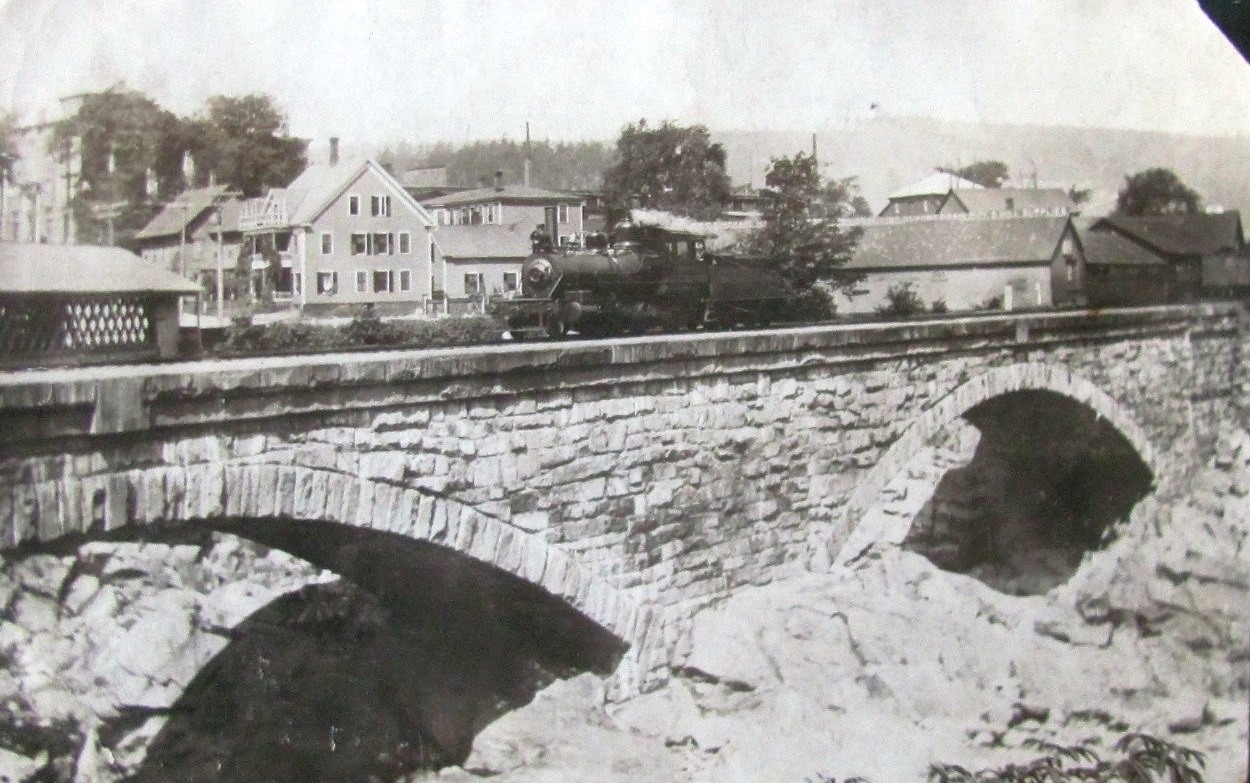In my mail this past week, from an anonymous donor, came a 1937 book titled, “Vermont: A Guide to the Green Mountain State, 1937,” written by Workers of the Federal Writers’ Project of the Works Progress Administration for the State of Vermont.
This project was part of Roosevelt’s New Deal. Thank you, kind soul, for sending me this book.
The following is an excerpt from the book, describing Bellows Falls.

“BELLOWS FALLS lies on one of the most sharply defined series of terraces that the Connecticut River has cut throughout its long course. On the New Hampshire side towers Mount Kilburn, stark and craggy; to the west rise the green hills of Vermont. Bellows Falls is definitely divided in three levels; the bottom lands, shaped into an island by a canal, are occupied by industry and a railroad; the middle level is the business mart; the upper sections are residential. The main thoroughfare, Westminster Street, is hemmed in by the bluff covered by homes and the industrial flats along the river. The height of the two- and three-story brick buildings packed on either side is accentuated by the extreme narrowness of the street.
“The tall brick tower of the Town Hall overshadows this canyon; projecting signs hang over narrow sidewalks, and store-windows reflect the jam of pedestrians and automobiles. Compressed between the walls of the vari-shaded brick, the small central square makes a peaceful oasis in the most crowded business district of the State.
“A concrete stairway, an unusual device for Vermont, climbs from Westminster to the level of School Street. From the flats below, the smoke of factories and locomotives rises to shroud the defile made by the river and hangs in a gray pall over the dark bulk of Mount Kilburn, standing grimly like a backdrop for the Bellows Falls drama of concentrated industrialism and commercialism. The scene has a strong similarity to that of Brattleboro, and less, to that of Windsor.
“The town’s most distinctive scenic feature is the falls, originally called Great Falls and named, like the town itself, for Colonel Benjamin Bellows, of Walpole, an early promoter. The falls are divided at their verge by a large rock, which at low water diverts the whole flow into the sixteen-foot western channel below, the narrowest point in the river’s entire length.
“During a freshet the waters dash against the rock, rise high into the air, and fall in smashing sheets fifty feet below to drive through both channels with a violence that has altered the near-by landscape several times.
“Usually destructive, these freshets have occasionally been beneficial, as when the one of 1797 created the river bank sites of several of the town’s present factories by filling a worthless swamp-hole with alluvial deposits.
“At least a dozen persons have gone over these falls and lived. The first of whom there is any record was an Abnaki squaw, whose adventure was celebrated in print as early as 1781. Carelessly allowing her canoe to be drawn to a point where she could not paddle against the current. The squaw drank a bottle of rum that she was taking to her brave and lay down in the canoe to await her fate.
“She was fished out below the falls, quite safe and quite drunk. The latest person known to have made the brief but perilous trip was Captain Paul Boynton, who passed over the falls in a rubber suit in 1879 before a crowd of two thousand people.
“The falls occasioned the construction here, between 1792 and 1802, of the first canal in America upon which work was actually begun, though not the first completed for navigation. Built by John Atkinson of London, it was retained until 1858, though little used after 1840. Nine locks were necessary to lift the barges, rafts, and small steamers over the falls.
“In the early 1830s the ‘William Hall’ made a trip up the river. The trip ended at Hartland and was never repeated, for the ‘William Hall,’ a side-wheeler, was bigger than any boat the canal-builders had envisioned and had to be drawn past the falls by means of ox-power, via the village street.
“After the late 1840’s the railroads soon destroyed all commercial navigation on the northern Connecticut, and the shrill blasts of their locomotives, instead of the merry, rowdy songs of the boatmen, were flung against the gaunt sides of Mount Kilburn to reverberate with piercing intensity over the town.”
This week’s old saying. “The only thing constant is change.”